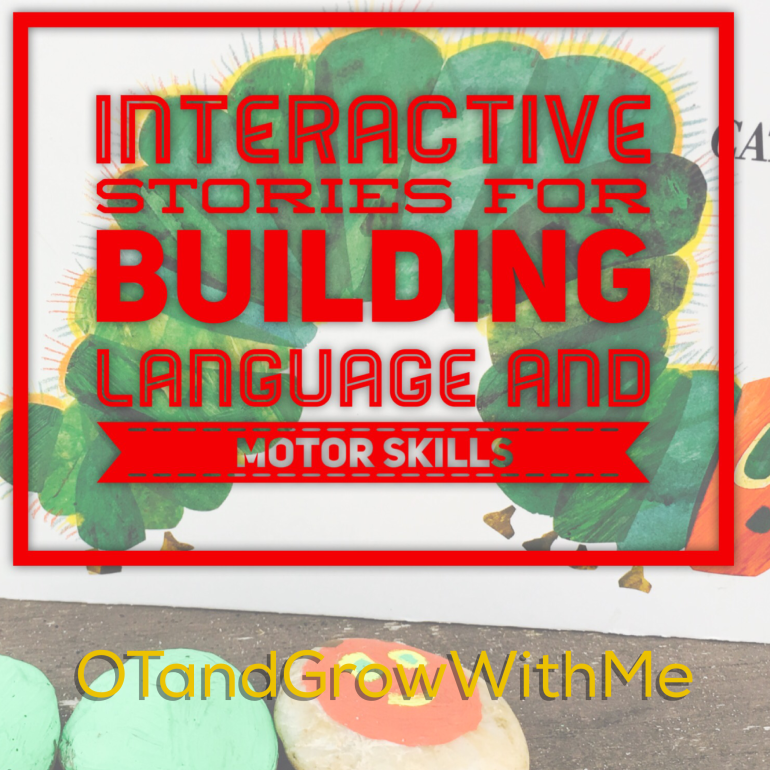Today on the blog I am sharing with you some ways to make your story and book time interactive to increase vocabulary skills, fine motor and bilateral skills, sensory processing, as well as increasing attention! These ideas can be implemented in your classroom, home or therapy groups!
Story Stones
These are a great way to let a child play and interact with “pieces” of the story. My example is with story stones I made for Ellie from The Very Hungry Caterpillar. I created stones to represent the caterpillar and all the fun things he eats. She works on scanning, counting and attending to the story when looking for the next stone with picture of what he eats next. You can do this lots of great stories such as The Three Little Pigs, The Three Billy Goats Gruff, or Ten Red Apples, just to name a few! If you don’t have stones you want to use, there lots of great options out there such as cut toilet paper rolls with pictures, pool noodles with pictures, bottle caps, or small magnet pictures to use on fridge or magnet board. (Check out my DIY magnet board for travel and home in this post: The Best Toys and Activities to Pack When Traveling with Kids !)
Sensory Books
This is a great way for kids to explore concepts from a book through touch sensation! It is a great strategy for hands on learners! You can be creative in what you use in your sensory bin to allow exploration, creation and great sensory input! Take this idea for example with using 5 Little Pumpkins! I have used candy pumpkins, pumpkin felt shapes or these soft Pom Pom pumpkins to have Ellie participate and play while we are reading the story! There are lots of great ideas for using sensory bins part of stories to have children digging to find parts of the story, lining up pieces of the story, putting pieces of the story into containers in the sensory bin, and much more!
Story Boxes
These are a favorite to use with my visually impaired students. You can place items that are part of the story in the box. As you read you present the items to the student so they can feel and explore the items you are taking about in the story. The story box I have created for Ellie this week is with Itsy Bitsy Spider! In this story he gets different items to try to get up to his spout. The spiders, goggles (glasses), umbrella and bouncy ball all represent things in the story that a child can feel as you are talking about how the spider used them! You could even add a spray bottle of water that you spray to represent rain! Another example would be placing a duck, feather, a small fan, mouse, or other items into a box to read the Silly Dilly Duckling book. You could also present small plastic animals for Old McDonald Had a Farm or 10 small bugs for Ten Busy Buzzy Bugs. The idea is to provide something for the child to feel to represent what they may not be able to see. This makes them use the tactile and auditory senses to create understanding of new vocabulary. You can also work on having the child reaching into the box to get the item and placing the item back in the box when finished to learn motor and cognitive concepts for “out” and “in”.
I hope these ideas give you some good inspiration and a great starting place for your own interactive book time! I would LOVE to hear your ideas so be sure to connect with me on my OT and Grow With Me social media (facebook, instagram, pinterest, twitter) by clicking the green heart icon above!
Ready to Grow – Casey














